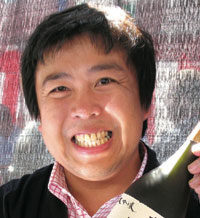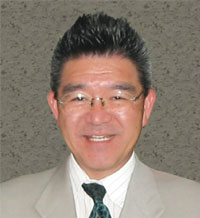What Type of Sake is Honjozo?
According to the “Standards for Manufacturing Methods and Quality Indication for Sake” by the National Tax Agency, Honjozo is stipulated as Japanese sake produced by sake rice with a rice polishing ratio below 70 percent, rice malt, water, and distilled alcohol with “good fragrance and color.”
Comparing these standards to that of Junmai, the only difference is the use of distilled alcohol, added to draw out the fragrance and balance the flavors. Honjozo is easy to drink, refreshing, and crisp in flavor compared to Junmai. Honjozo is suitable as hot sake and recommended for consumption with meals. Also, Honjozo tends to become dry as sake type, since the dryness is derived from alcohol.
Japanese sake is divided into Junmai or Honjozo type, depending on if distilled alcohol is added or not. Adding distilled alcohol is a technique developed during or after World War II due to the shortage of rice. Some may hold negative opinions about “Alcohol-added Sake,” but this is not always justified despite the main purpose of adding alcohol to generic sake today is to increase the quantity of alcohol using water and alcohol, for the purpose for adding distilled alcohol is entirely different for Honjozo, as indicated above.
However, since distilled alcohol is added to adjust the aroma and flavor of sake, of course there is an appropriate amount that can be added. The amount of distilled alcohol used is below 10 percent of the sake rice weight, as stipulated under these standards. Distilled alcohol weight is calculated by converting to 95 percent alcohol (the alcohol proportion is also stipulated). However, converting to 100 percent to make the calculation easier, the limit for the amount of distilled alcohol to be added is 116.4 liters per 1t of white rice.
On the other hand, even with generic sake, the amount of distilled alcohol is limited by the Liquor Tax Act to ensure the distinct fragrance and flavor of Japanese sake is not lost. However, the limited amount used for 1t of white rice upon conversion to 100% alcohol is 280 liters (62 gallons). On the other hand, the limit for the amount of distilled alcohol to be added to Honjozo is 2.4 times more.
For Honjozo with “especially notable fragrance and color” with rice polishing ratio of below 60 percent, the “Tokubetsu Honjozo” label can be applied if the distilled alcohol amount used for special brewing methods (sake brewing suitable rice) is above 50 percent, if Ginjo sake, etc. is mixed in), or if the difference in quality is objectively described on the label.
Comparing these standards to that of Junmai, the only difference is the use of distilled alcohol, added to draw out the fragrance and balance the flavors. Honjozo is easy to drink, refreshing, and crisp in flavor compared to Junmai. Honjozo is suitable as hot sake and recommended for consumption with meals. Also, Honjozo tends to become dry as sake type, since the dryness is derived from alcohol.
Japanese sake is divided into Junmai or Honjozo type, depending on if distilled alcohol is added or not. Adding distilled alcohol is a technique developed during or after World War II due to the shortage of rice. Some may hold negative opinions about “Alcohol-added Sake,” but this is not always justified despite the main purpose of adding alcohol to generic sake today is to increase the quantity of alcohol using water and alcohol, for the purpose for adding distilled alcohol is entirely different for Honjozo, as indicated above.
However, since distilled alcohol is added to adjust the aroma and flavor of sake, of course there is an appropriate amount that can be added. The amount of distilled alcohol used is below 10 percent of the sake rice weight, as stipulated under these standards. Distilled alcohol weight is calculated by converting to 95 percent alcohol (the alcohol proportion is also stipulated). However, converting to 100 percent to make the calculation easier, the limit for the amount of distilled alcohol to be added is 116.4 liters per 1t of white rice.
On the other hand, even with generic sake, the amount of distilled alcohol is limited by the Liquor Tax Act to ensure the distinct fragrance and flavor of Japanese sake is not lost. However, the limited amount used for 1t of white rice upon conversion to 100% alcohol is 280 liters (62 gallons). On the other hand, the limit for the amount of distilled alcohol to be added to Honjozo is 2.4 times more.
For Honjozo with “especially notable fragrance and color” with rice polishing ratio of below 60 percent, the “Tokubetsu Honjozo” label can be applied if the distilled alcohol amount used for special brewing methods (sake brewing suitable rice) is above 50 percent, if Ginjo sake, etc. is mixed in), or if the difference in quality is objectively described on the label.
本醸造酒とは、どのような日本酒か
国税庁の「清酒の製法品質表示基準」によると、本醸造酒とは、精米歩合70%以下に精白した白米と米麹、水、それに醸造アルコールで造った日本酒で、「香味、色沢が良好なもの」と規定されている。
この基準を純米酒のそれと比べると、違いは醸造アルコールを使用するという点だけである。では、どうして醸造アルコールを加えるのかというと、香りを引き立て、味のバランスを軽快にととのえるためだ。本醸造酒は、純米酒に比べて味がすっきりとして爽やかで、飲みやすい酒といえる。燗にも向き、食事と一緒に飲むのに適した酒という評価もある。また、日本酒の辛みはアルコールに由来するから、一般に本醸造酒は辛口タイプの酒になる傾向が強い。
日本酒は、醸造アルコールを添加するかしないかで、純米タイプと本醸造タイプとに分けられる。醸造アルコールの添加というと、米不足時代の戦中戦後に編み出された、いわゆる「アル添酒」や「三増酒」のマイナスイメージを持つ向きもあるようだが、必ずしもそうではない。たしかに、現在でも普通酒の場合のアルコール添加は、水とアルコールによって酒を増量することが主な目的だ。しかし、すでに述べたように本醸造酒の場合のアルコール添加は、目的がまったく違うのである。
ただし、香味の調整をするための添加だから、当然適量がある。同基準で認められている醸造アルコールの使用量は、白米重量の10%以下。醸造アルコールの重量計算は95%アルコールに換算して行なう(アルコー ルの比重も定められている)ことになっているが、分かりやすく100% アルコールに換算すると、白米1t当たり116.4リットルが限度である。
一方、普通酒の場合でも、日本酒本来の香味を失わないように、酒税法によって醸造アルコールの添加量が制限されているが、その使用量の限度は白米1t当たり100%アルコール換算で280リットルである。本醸造酒の使用量限度の2.4倍である。 本醸造酒のうち、「香味、色沢がとくに良好なもの」で、精米歩合が60%以下の場合、または特別な製造方法(酒造好適米の使用割合が50%以上、または吟醸酒などを混和した場合など)により、品質の違いを客観的事項をもって説明表示できるもの(要説明表記)の場合は、「特別本醸造酒」の表示ができることになっている。
この基準を純米酒のそれと比べると、違いは醸造アルコールを使用するという点だけである。では、どうして醸造アルコールを加えるのかというと、香りを引き立て、味のバランスを軽快にととのえるためだ。本醸造酒は、純米酒に比べて味がすっきりとして爽やかで、飲みやすい酒といえる。燗にも向き、食事と一緒に飲むのに適した酒という評価もある。また、日本酒の辛みはアルコールに由来するから、一般に本醸造酒は辛口タイプの酒になる傾向が強い。
日本酒は、醸造アルコールを添加するかしないかで、純米タイプと本醸造タイプとに分けられる。醸造アルコールの添加というと、米不足時代の戦中戦後に編み出された、いわゆる「アル添酒」や「三増酒」のマイナスイメージを持つ向きもあるようだが、必ずしもそうではない。たしかに、現在でも普通酒の場合のアルコール添加は、水とアルコールによって酒を増量することが主な目的だ。しかし、すでに述べたように本醸造酒の場合のアルコール添加は、目的がまったく違うのである。
ただし、香味の調整をするための添加だから、当然適量がある。同基準で認められている醸造アルコールの使用量は、白米重量の10%以下。醸造アルコールの重量計算は95%アルコールに換算して行なう(アルコー ルの比重も定められている)ことになっているが、分かりやすく100% アルコールに換算すると、白米1t当たり116.4リットルが限度である。
一方、普通酒の場合でも、日本酒本来の香味を失わないように、酒税法によって醸造アルコールの添加量が制限されているが、その使用量の限度は白米1t当たり100%アルコール換算で280リットルである。本醸造酒の使用量限度の2.4倍である。 本醸造酒のうち、「香味、色沢がとくに良好なもの」で、精米歩合が60%以下の場合、または特別な製造方法(酒造好適米の使用割合が50%以上、または吟醸酒などを混和した場合など)により、品質の違いを客観的事項をもって説明表示できるもの(要説明表記)の場合は、「特別本醸造酒」の表示ができることになっている。




